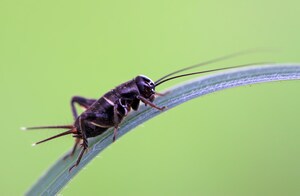DENVER, Sept. 20, 2018 /PRNewswire/ -- Hookworms exploit a live fast/die young strategy in their South American fur seal pup hosts, report Morris Animal Foundation-funded researchers at the University of Georgia. As a result, they often kill their host, rather than finding a happy equilibrium. Scientists are concerned that this type of hookworm infection could eventually pose a risk to critically endangered populations of fur seals.
The research, recently published in the International Journal for Parasitology: Parasites and Wildlife, showed that by adapting to the seals' breeding cycles, this Uncinaria species has evolved to live only 30 to 65 days in the pups' intestines. This forces the worms to feed at a constant rate before they produce eggs and die. The result is high levels of anemia in pups, with more than 20 percent dying of parasitic infections every year.
"Usually we find that most parasites will try and find an equilibrium with a host, so they will extract just enough resources for their own transmission and their own reproductive success," said Dr. Mauricio Seguel, a research fellow at the University of Georgia. "What we found is a very unusual relationship, but one that is well synchronized to a short window of time."
The team studied a reproductive colony of about 3,000 South American fur seals on Guafo Island, in southwestern Chile. During the 2014 and 2015 birthing seasons, the team measured, weighed and took blood and fecal samples from the same randomly selected newborn pups every five to 10 days for 10 weeks. The sampling allowed researchers to follow infections beginning at initial transmission, as well as monitor the pups' health status.
The study showed hookworms feed from their hosts at a constant rate, regardless of how many other hookworms are in the intestine. Further, despite reaching high within-host densities, female hookworms do not decrease egg output. Pups with a higher burden of parasites experience anemia and mortality and release more hookworms into the soil through their feces.
Fur seal pups acquire hookworms during their first days of life, through their mothers' colostrum. Before this, larvae live in the soil, then penetrate a female's skin and live in her subcutaneous tissue until she is pregnant, when they migrate to her mammary glands.
Researchers believe the hookworms' short lifespans have evolved to synchronize with the fur seals' reproductive cycles. Due to the harsh environment on Guafo Island, hookworm larvae survival time in the soil is very limited as storms will wash many to sea. During birthing season, though, fur seals congregate in large groups on the beach. If hookworms can produce as many eggs as possible, as soon as possible, during this time, they provide greater chances for their larvae to find a female's skin to penetrate.
"This study really allows us to know our enemy. Now that we better understand how these parasites live, we can begin to learn how to control the problem to avoid the worst consequences," said Dr. Kelly Diehl, Morris Animal Foundation Interim Vice President of Scientific Programs. "This particular population is stable, but other populations of fur seals are critically endangered. If they were infected with this disease, we now know when we could potentially intervene to protect fur seal pups and increase survival."
About Morris Animal Foundation
Morris Animal Foundation's mission is to bridge science and resources to advance the health of animals. Founded by a veterinarian in 1948, we fund and conduct critical health studies for the benefit of all animals. Learn more at morrisanimalfoundation.org.
SOURCE Morris Animal Foundation
Related Links
http://www.morrisanimalfoundation.org
WANT YOUR COMPANY'S NEWS FEATURED ON PRNEWSWIRE.COM?
Newsrooms &
Influencers
Digital Media
Outlets
Journalists
Opted In






Share this article